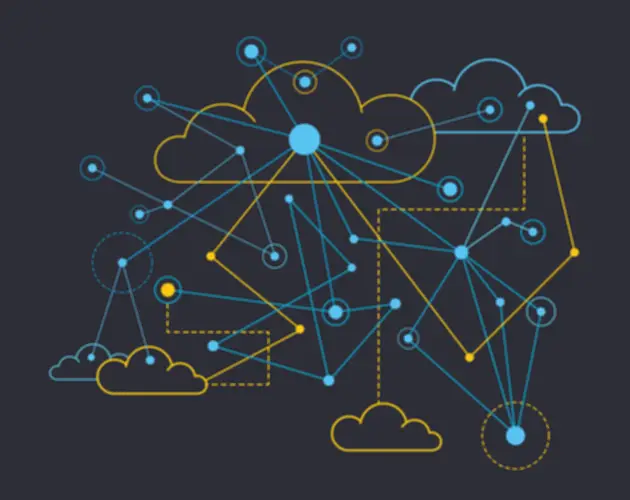System Improvement Lifecycle Sdlc Security And Compliance Michigan Tech
Project and program managers, system and software program engineers, development groups and finish customers all participate in the SDLC. The software program development lifecycle (SDLC) is a framework that development groups use to produce high-quality software program in a systematic and cost-effective method mobile application tutorial. These groups follow improvement fashions ranging from agile to lean to waterfall and others. The Agile model is a versatile project management method that emphasizes iterative improvement, collaboration, and buyer feedback. By breaking the product down into cycles, this software program improvement life cycle method produces a practical product in a short amount of time. Every release’s testing yields information that is included in the subsequent iteration.
Streamlining The Transition And Training Phases
From allocating resources to deployment, it all should go through a pipeline to align the whole piece of the development cycle. That’s the first purpose, SDLC got here into the limelight, and after witnessing glorious success and have become an enormous hit. Providing a high-class part system development life cycle methodology that additionally matches the customer’s requirement in phrases of cost, time and efficiency are among the main purpose of this cycle.
- Certain models — such as Agile — work higher than others for tasks with unclear requirements.
- The Deployment phase would not signal the tip, however quite a notable milestone.
- Similar to a home-owner considering a renovation or promoting their home, the software might require a complete revamp or phase-out to stay related and priceless.
- SDLC is one conceptual mannequin used in project administration and describes the levels involved in an info system development.
- At Netguru we specialize in designing, constructing, delivery and scaling stunning, usable merchandise with blazing-fast effectivity.
Top 5 Sdlc(software Development Life Cycle ) Methodologies
The Iterative model divides the project into small, manageable components (iterations), and each iteration produces a working model of the software program. After every iteration, the software is examined and refined primarily based on suggestions till the final product meets all requirements. It follows a extra inflexible structure than Agile software improvement, with clearly outlined steps focusing only on incremental improvements. This mannequin works on placing design first (as it takes less time) for both planning and analyzing which also makes it one of the best methods when it comes to price saving. It’s a technique of making ready for the execution of high-quality software and is utilized by all-scale software program improvement corporations.
Iv Listing Of Systems Improvement Life Cycle Methodologies
Baselines[clarification needed] are established after four of the five phases of the SDLC, and are critical to the iterative nature of the model.[23] Baselines turn into milestones. This may contain coaching customers, deploying hardware, and loading information from the prior system. Conduct with a preliminary evaluation, contemplate different solutions, estimate prices and benefits, and submit a preliminary plan with recommendations.
System Development Life Cycle (sdlc) Methodology: Phases, Fashions And Advantages
This stage ensures the system is saved current and meets the company’s altering wants. System requirements are carefully defined, starting with amassing and analyzing end-user requirements to provide an in depth software requirement specification doc for the project. During this stage of the project, the event staff gathers feedback from customers, sales, inner and external specialists, and developers.

The SDLC commences with the planning phase, where tech professionals strategically outline the project’s scope, aims, and useful resource allocation. This phase sets the inspiration for a successful improvement journey, guaranteeing that builders meticulously contemplate all aspects before the coding begins. Executing all seven phases of the System Development Life Cycle is important to make sure the success of your project within the realm of software program improvement.
The final but not least important stage of the SDLC process is the upkeep stage, where the software program is already being utilized by end-users. The testing stage ensures the application’s options work correctly and coherently and fulfill user goals and expectations. Once the planning is finished, it’s time to modify to the analysis and analysis stage.
The improvement group evaluates the project and determines which elements of the other course of models to include. Systems analysis and design (SAD) could be thought of a meta-development activity, which serves to set the stage and certain the problem. Architecture, and business structure, and depends closely on concepts such as partitioning, interfaces, personae and roles, and deployment/operational modeling to arrive at a high-level system description. This high-level description is then broken down into the components and modules which may be analyzed, designed, and constructed individually and integrated to accomplish the enterprise aim. SDLC and SAD are cornerstones of full life cycle product and system planning.
SDLC models have been introduced to comply with a disciplined and systematic method whereas designing software program. With the software program development life cycle, the method of software program design is split into small elements, which makes the problem more comprehensible and easier to solve. SDLC contains a detailed description or step-by-step plan for designing, growing, testing, and sustaining the software. The SDLC process entails several distinct stages, including planning, evaluation, design, building, testing, deployment, and maintenance. DevOps, identical to Lean, can work alongside Agile to create an infrastructure that eliminates the limitations slowing development and supply of the ultimate software product. DevOps brings deployment and operation of the software program totally into the Agile improvement course of in the identical way Agile introduced testing and business analysis into software growth.

As the complexity and scale of programming grew, the concept of structured programming emerged. Over time, structured programming demanded extra tactical improvement fashions, thus sparking the beginnings of the SDLC. In this stage, all the requirements for the goal software are specified.
Risk evaluation is essential to figuring out potential challenges and figuring out if the project is price pursuing. This methodology was launched first by Winston W. Royce in 1970 and has been adopted by the software program trade over the period of time. The uniqueness of this mannequin is its flow, every stage should be handed over before the subsequent section is initiated and the subsequent phase is aligned to start only when the present one is marked as DONE. The waterfall methodology is suitable for big projects and on the downfall, it’s not as versatile as Agile which leads to accumulating tons of of required modifications post-dated.
Phases are often repeated until the ultimate product is achieved with success. This duty may contain creating consumer manuals, conducting coaching sessions, or offering on-site support. It embodies the planning, analyzing, and designing efforts of the previous levels. Though it is most likely not flawless, it represents a major stride in direction of a priceless software resolution. The Design section is the link between the software program’s purpose (established within the Planning and Requirements Analysis phases) and its execution (defined in the coding phase).
It is mainly used in hardware or a combination of each software and hardware at the same time. The product management function in higher schooling empowers institutions to align their offerings with overarching institutional objectives. The initiation of a system (or project) begins when a business need or opportunity is identified. After the Concept Proposal is approved, the System Concept Development Phase begins. A step-by-step information on the method to drive a scrum project, prioritize and organize your backlog into sprints, run the scrum ceremonies and more, all in Jira.

Changes are passed through the totally different SDLC phases repeatedly in a so-called “spiral” movement. This method implies a linear sort of project section completion, where each stage has its separate project plan and is strictly related to the earlier and next steps of system development. Once the product is prepared to go, it’s time to make it out there to its end customers and deploy it to the manufacturing environment. Similarly, automated and cloud-based platforms, which simulate testing environments, take a big amount of manual trip of this stage of the system development life cycle. Selenium, a browser testing tool, is one well-liked example of such a platform.
Artificial Intelligence (AI) and Machine Learning (ML) are revolutionizing the SDLC by introducing new capabilities in automation, predictive analytics, and clever decision-making. By incorporating AI-driven instruments during numerous stages of the SDLC, developers can anticipate user needs, automate routine tasks, and optimize the software program design process. This integration of AI and ML just isn’t solely accelerating the design phase however can also be enhancing the accuracy of project specs and requirements, leading to software that better fulfills consumer expectations. Establishing greatest practices for a safe SDLC encompasses prioritizing safety from the design section onward. It entails conducting menace modeling, utilizing static and dynamic code evaluation tools, and guaranteeing that safety is not an afterthought however a steady concern throughout the event lifecycle.
Transform Your Business With AI Software Development Solutions https://www.globalcloudteam.com/ — be successful, be the first!




Geef een reactie